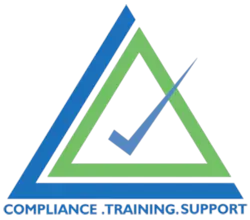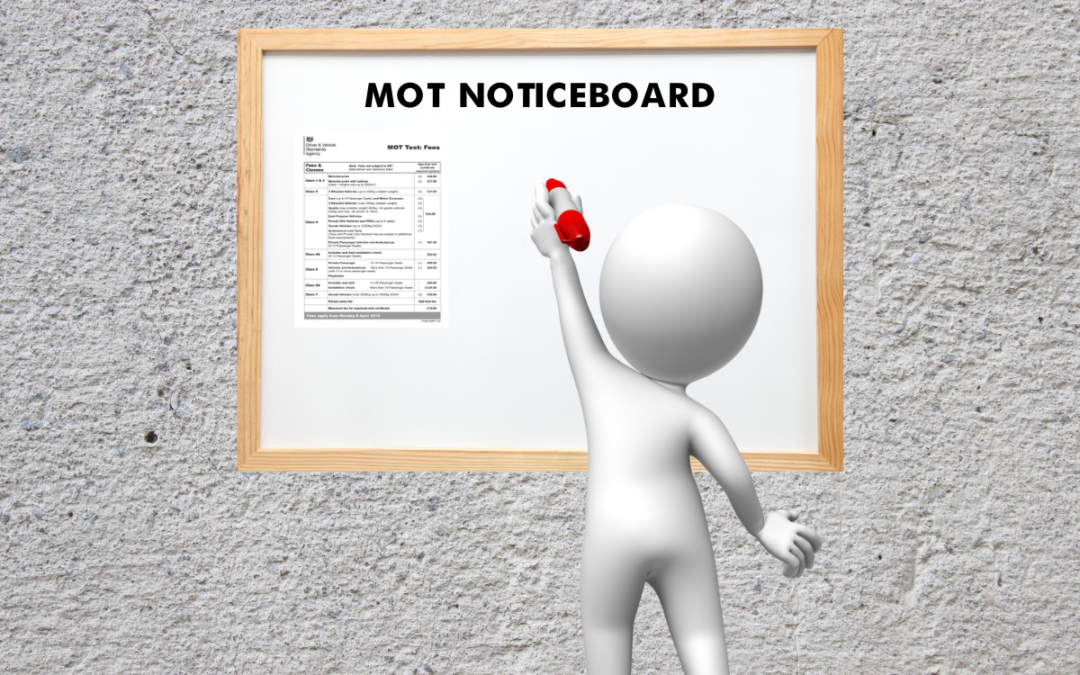We’re sure you’ll have noticed (pun intended!) the recent Special Notices dealt with some changes for your MOT business’ noticeboard. It’s important to regularly check for updates from the DVSA and other regulatory bodies to ensure ongoing compliance with MOT noticeboard requirements as well as other changes in MOT standards set by the DVSA. You should familiarise yourself with these changes and adhere to them to meet MOT compliance standards and avoid any nasty penalties!
Here’s what the MOT Guide currently says about MOT compliance:
Summary: For compliance, the MOT noticeboard must be clearly visible in the MOT Centre, as well as being accessible, and used only for official DVSA notices and required documents, with enough space for specific posters and certificates.
A noticeboard with a protective transparent covering must be positioned inside the vehicle testing station so that DVSA notices can be easily read by any persons intending to or submitting vehicles for test.
The MOT noticeboard must not be obscured or be inaccessible and must be of sufficient size to accommodate at least one A3 fees poster (landscape) and one Certificate of Authorisation (A4 portrait). It must not be used for any other purpose other than official DVSA MOT notices and company public liability insurance and certificates of incorporation.
If the noticeboard displays both MOT and business documents, there must be clear and distinct separation between the MOT documents and any documents not related to MOT testing.
All authorised examiners (AEs) must display:
- the certificate of authorisation (VT9) issued by DVSA
- the current fees and appeals poster (form VT9A) showing vehicle classes, test fees and appeals procedure and the details of how to contact DVSA
So what do some of these terms mean?
- “Easily read by any persons intending to or submitting vehicles for test” In practical terms, anyone who walks into your MOT Centre service reception area should be able to see and read the contents of the MOT Centre noticeboard whether they’re booking their car in at the desk or sitting in your customer waiting area.
- “not be obscured or inaccessible”
Basically, it means you need to ensure that they can be easily seen! For example, I’ve seen boards hidden behind large plants and roller banners, mounted at the back of the MOT service desk or propped up on the floor. All of these were obscured or inaccessible to the customer which meant the MOT Centre was taking a huge risk in their commitment to compliance.
- “It must not be used for any other purpose”
Whilst you might be very proud and want to show off all those thank you cards or want to do another local business a favour by putting up an advert to discuss their Weight Watchers group, the MOT noticeboard isn’t the place to do it!
The only things you are allowed display on the MOT Noticeboard, other than MOT notices, are your Public Liability Insurance docs and certificates of incorporation.
- “be clear and distinct separation between the MOT documents and any documents not related to MOT testing”.You need to give your documents their own part of the board to ensure that the MOT noticeboard has a clear identity and doesn’t get muddled with anything else.
So what should be on the MOT noticeboard?
You must display your VT9 and both sides of the VT9a and the noticeboard should be instantly recognisable to anyone visiting your premises by being clearly marked as an MOT Noticeboard! The responsible person to ensuring this is in place is, of course, the MOT Site Manager.
So, if you’re a Site Manager responsible for MOT compliance, or a MOT Tester, or indeed, anyone involved with MOT sites, go and take a look at your MOT noticeboard and run through this brief assessment:
- Is it visible to those booking or waiting for their MOT?
- Is it covered by a protective transparent covering?
- Is it clearly marked as an MOT Noticeboard?
- Does it have the correct paperwork on it?
- How old are the papers on the board, are they up to date? Anything that says VOSA or Vehicle Inspectorate probably needs updating! (VOSA become DVSA (Driver and Vehicle Standards Agency) in 2013. Vehicle Inspectorate became VOSA in 2003).
The result of this checklist review should be documented, and if any deficiencies are found, appropriate action should be taken to address them.
If the noticeboard or its contents are damaged, repairs should be carried out promptly. It is also important to have clear policies in place for regular noticeboard maintenance and compliance checks. Failure to do so could result in penalties for your business.
By ensuring that you can answer yes to all the above and getting your papers up to date, you can rest easy knowing that’s another thing ticked off and you’re committed to meeting MOT compliance standards!
And if you’re still not sure you’ve got it right, drop us an email at Karena@themotgroup.co.uk or use our contact page, we’re always happy to provide advice, support and training to give you the confidence that you’re on the right track! (and to avoid those nasty penalties!)

